Sneak Peek: Innovative New Music & Wearable Tech Gear for Running
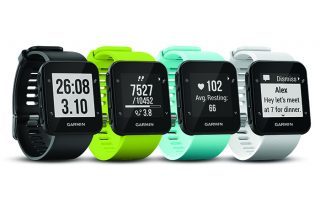
Game-improvement wearable tech gear—in other words, products aimed at helping you run better and more consistently—remains a white-hot category in running. The massive Aug. 3-6 Outdoor Retailer Summer Market trade show in Salt Lake City showed off a lot of new and improved trackers, watches, music accessories and tech apparel, but it also coincided with a big week of announcements and releases of wearable fitness tech for the upcoming holiday season. Click through the photos below for a look at some of the new wearable tech gear you’ll see in stores this fall and winter.
RELATED: Take a Sneak Peek at 2017 Running Shoes
Photo Gallery
1 of {count}
Back to Start
View Larger Image
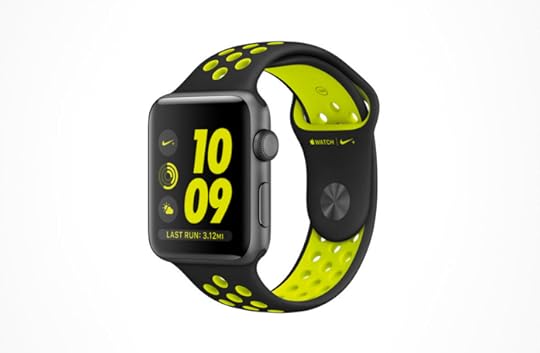
Apple Watch Series 2 & Apple Watch Nike+
On Sept. 7, Apple announced the Apple Watch Series 2. Of most significance to runners is that the watch now includes a rapid acquisition GPS chip so it can now be run without a phone. (It is swim rated to 50 meters with an innovative speaker which ejects water.) The screen is two times brighter than the original for hopefully improved readability on run. (The original Apple Watch was very difficult to see in bright light.) Battery life stats were not unveiled during the presentation, but they were a concern and a limitation of the original Apple Watch. It is available in many case and band styles, including a new super-hard white ceramic case.
Apple and Nike also introduced the Apple Watch Nike+ ($369), something that Nike is calling “the perfect running partner.” With a light aluminum case, the Nike watch features exclusive Nike Sports Bands and a watch version of Nike+Run Club app focused on simplicity, daily motivation, smart run reminders and a special emphasis on “Just Do It” Sunday runs. With basic run stats and an advanced mode for the runner focused on deeper data and metrics, we can’t wait to try the Nike+ watch. Other run apps are sure to follow with their own innovative Apple Watch apps now that the watch has GPS. (The Apple Watch Series 2 will be available for pre-order on Sept. 9, while the Nike+ model will be available in late October.)
Apple’s iPhone 7 will have many new features and upgrades. Of most interest to runners is the claimed longest battery life of any iPhone to date, an optically stabilized improved camera for on the run pictures, and very importantly for runners improved dust and water resistance to the IP67 standard which means it is totally protected from dust and protected from immersion between 1cm and 1meter. You can fall into a pool—as Apple showed in its presentation—and you will be OK in the rain, but our advice is not to try swimming with the phone. (The iPhone 7 will be available for pre-order on Sept. 9; shipping begins on Sept. 16.)
Apple also announced a new, completely wireless ear buds, Apple Air Pods ($159) as they eliminated the standard headphone jack. The Lightning connector is now the single all-purpose jack for charging and audio. Air Pods have a 5-hour battery life while in-use and 24 hours of power available from a very clever charger case, which will do dual duty to help you keep from losing them. Each pod has dual microphones and they can used as a pair or solo. (Available late October.)
View Larger Image
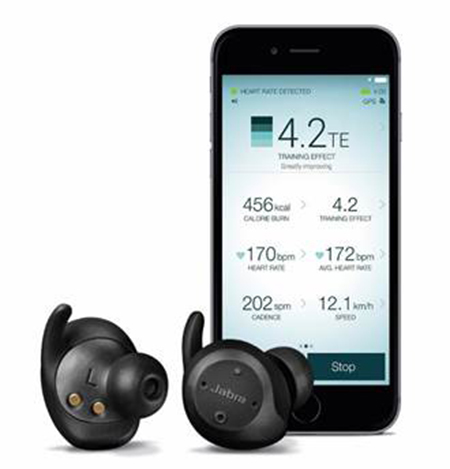
Jabra Elite Sport
Fresh on the heels of the new Sports Pulse Special Edition Headphones, Jabra has also unveiled its Elite Sport earbuds ($250). Truly wireless with the possibility to run with both buds or just one, think no music just app stats and better situational awareness, the Elite is water and sweat proof, has 3 hour music and call battery life, and auto switching dual microphones in each bud for better phone call sound quality. Run features include an in ear heart rate monitor with the Jabra app also calculating VO2 Max and providing real time coaching. (Available in November.)
View Larger Image
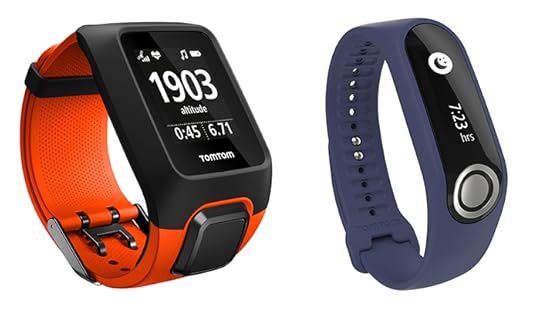
Tom Tom Adventurer + Touch
TomTom is debuting the Adventurer ($350), a new trail and mountain activities-oriented GPS watch with an integrated music player and wrist heart rate sensing capabilities. It includes a barometric altimeter for more accurate and responsive real-time vertical tracking, a compass and Route Exploration features—including the ability to upload a route to the watch and follow, as well as back-to-start navigation. (Available in September.) Meanwhile, the Touch ($130) is a heart rate and activity tracker band with an unusual touch, a finger press body composition sensor (percentage of body fat and muscle mass). Also of note, all four Spark 3 GPS watches from the $130 GPS to the 250 Cardio+Music+HP) now come with Route Exploration, an improved a free Bluetooth headset a sleeker slimmer design, and no increase in prices. (Available Sept. 8.)
View Larger Image
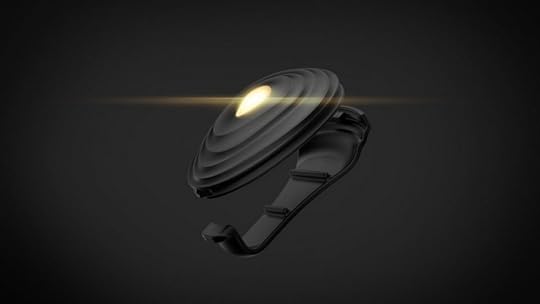
Stryd
Stryd, the first running-specific power meter, has smartly been switched from a chest heart rate strap device to a shoe-clip sensor. From its inception, Stryd ($199) has tracked a variety of data, delivering heart rate, cadence, impact, movement, form, altitude and power values to its smartphone app and several smartwatch brands. The Stryd system offers power value in real time, with no data lags like most heart-rate monitors. It serves up both audio feedback on the run and post-workout feedback for long-term improvement. Added to the 12 metrics that Stryd quantifies into run power is leg spring stiffness, which has been correlated to running efficiency by scientific studies, but never before available in a wearable. Leg spring stiffness can be increased by form changes and conditioning. (Available in September.)
View Larger Image
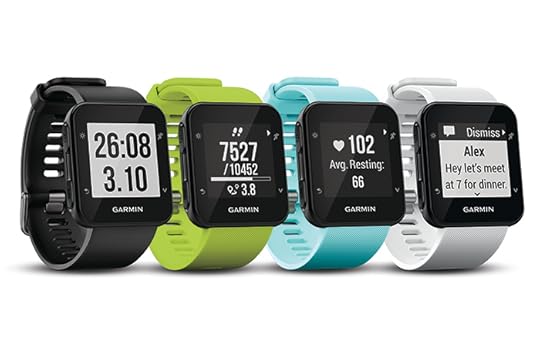
Garmin Forerunner 35
The just-announced Forerunner 35 ($200) has a stylish fresh design and comes in fun colors, including white, frost blue, limelight and black. It features Elevate 24/7 wrist heart rate monitoring, a new high-resolution and high-contrast monochrome display, 35 multi-sport profiles and a full suite of phone connectivity features with vibration alerts. A great value at $200, it slides into the Garmin lineup at $50 less than its color touch-screen cousin Vivoactive HR and $20 less than the tiny GPS run and activity band Vivosmart HR+. (Available this fall.)
View Larger Image
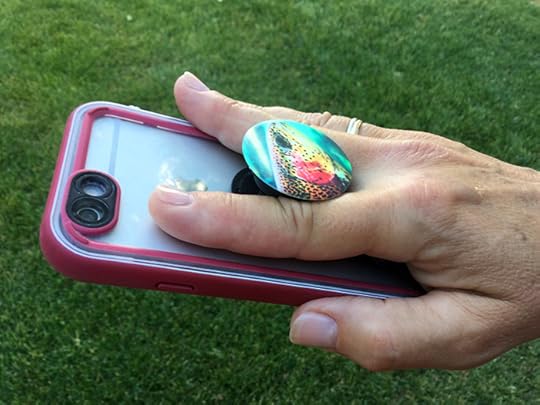
PopSockets
These colorful, ingenious, collapsible stick-on disks ($10-$15) immediately caught our eye at the trade show. Pop them out to one of two positions and slip your fingers against the soft ridged bellows below the disk to securely hand carry your phone. Run app stats are a turn of the wrist away and fast pictures or texts on the go are a breeze. Reusable for multiple times, they also become a video view stand and headphone cord wrap. (Available now.)
View Larger Image
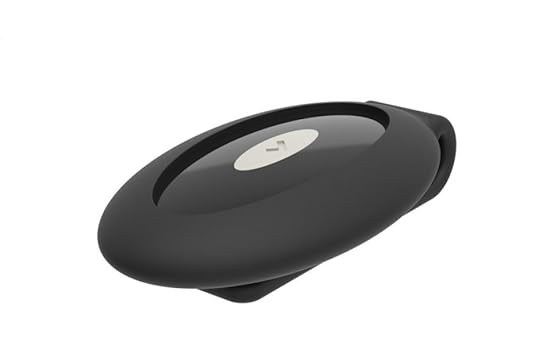
Lumo Run
Lumo Run offers two ways to track running data and improve running form and efficiency through a clip-on sensor pod ($100) or sensor-integrated apparel—running shorts for men ($199) and running capris for women ($199). Lumo’s
sensors capture accurate running biomechanics
through core body movements. The Lumo system tracks five key running metrics—cadence, bounce, braking, rotation and drop—and offers audible real-time performance feedback for each one, as well as post-run summaries and coaching tips. The in-run tips and audio coaching are easy to do and effective, with post-run exercises addressing the areas that need improvement spot on.
View Larger Image
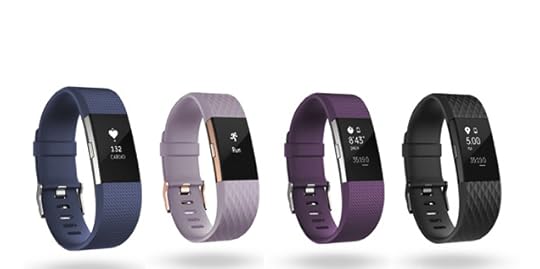
FitBit Charge 2
The top-selling fitness tracker and wearable device has been updated with stylish interchangeable bands—including luxe leather options—a much larger screen, multiple watch faces, and new fitness and connection features, all at the same size and base price ($149.95). New running and fitness features include multi sport—select your activity and see appropriate metrics including when phone connected GPS run stats., an estimate of VO2 Max, a simple fast/slow time-based interval mode, and on demand guided breathing pauses informed by heart rate variability. Phone connectivity adds calendar and text notifications to the original Charge HR’s call notifications. (Available now.)
View Larger Image
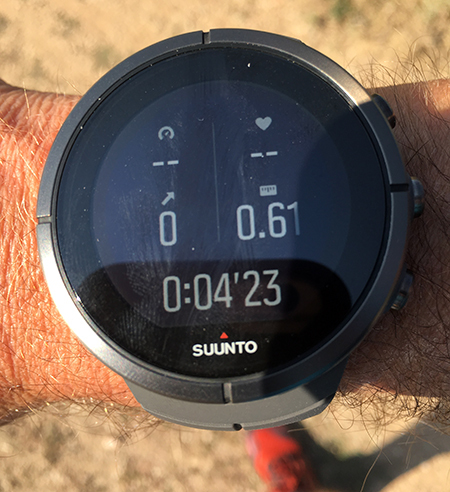
Suunto Spartan Ultra
We have been trail and road running with Sunnto’s new top of the line, multisport, mountain-focused GPS watch, and we liked it for a lot of reasons. A beautiful, light and easy on the wrist “big” watch, the Spartan Ultra ($699 to $799) has a sapphire touch screen. The wide viewing angle, high-resolution, color screen with classy modern analog and digital watch faces sets a new standard for on-the-run bright light multi-data field legibility and even navigation. It's much more user friendly than most high-end smartwatches we've tested, thanks to a much more intuitive functionality. (Available now; a slightly thinner triathlon-focused Spartan Sport will arrive later this year.)
View Larger Image

Strava Beacon
Strava Premium users were upgraded in mid-August with Beacon, a safety and race tracking feature which allows up to three contacts to get a text when you start a run, follows you on a map, and finally receives a text when you stop recording or have a low battery. The free version recently received an upgrade to the large, super clear display format formerly reserved for Premium.
View Larger Image
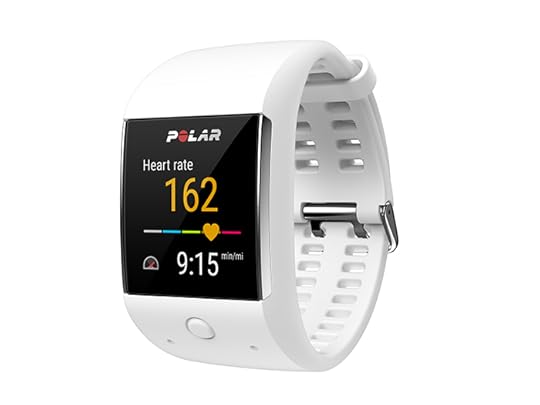
Polar M600 Smart Watch
Heart rate monitoring pioneer Polar’s first wrist-based heart rate GPS watch, the sleek, color screen M600 ($330) is based on Google Android Wear. You get Polar’s excellent training watch features and platform along with the open Android Wear operating system, dramatically extending the 24/7 utility and customizability of the watch, particularly for Android phone users. They can access the 4000 Android Wear apps and even turn the watch into a standalone music player. In our initial testing we loved the small size, very high-resolution screen and phone connectivity. We noticed all-day battery life is shorter than conventional GPS “smartwatches” when phone connected, about two days Android, one day iPhone or from a full charge up to eight hours in training mode. (Available now.)
View Larger Image
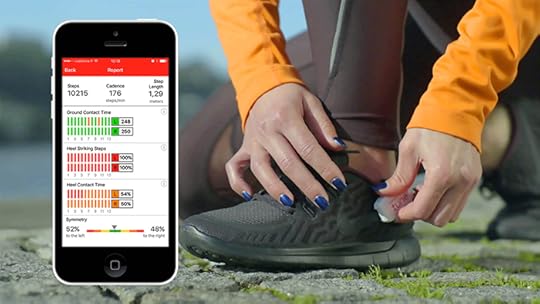
Tune Sensor Insoles and App
New from Portugal-based Kinematix, Tune ($200) is a sensor and app package that seeks to reduce your overall ground contact time and how much of your contact is at the heels, both seen as keys to running efficiency by some studies. Data comes from a pair of very thin (2mm) insoles embedded with force sensors and accelerometers that slip under your usual shoe sock liner. The GPS app provides in-run audio cues. The insoles can also be paired to Android smartwatches with GPS to go phone free. After the run, performance can be reviewed in detail augmented by the incorporated GPS tracking. Exercises based on crunching the data, complete with video demos, are provided, and then personalized after a period of data capture. (Available in late September.)
View Larger Image
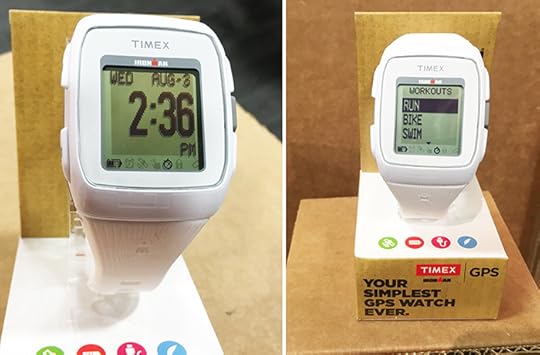
Timex Ironman GPS Watch
Billed as “the Simplest GPS Watch, Ever,” the latest sport watch from Timex ($99) has intuitive, one-button functionality, a 12-hour battery life (even in full GPS mode) and charges with a micro USB port—meaning no proprietary connection cords—to download workouts (no app) and there is an optional color strap ($14.99). Powered by the latest fast acquisition GPS chip, this watch does all the basics of distance, average pace and time. It has a simple triathlon mode of run, swim, ride, but it will only capture time in the water. (Available now.)
View Larger Image

Whoop
The Whoop system ($500) seeks to help athletes understand how well they are sleeping and responding to stressors of workouts, and life, so as to better inform what level of effort (or any stress) may be advisable for the day. It samples heart rate 24/7 and more frequently than other bands at up to 100 times per second. Whoop captures and interprets the difficulty in capturing key metric of Heart Rate Variability (HRV). Studies have shown HRV occurs in the last 5 minutes of slow wave sleep and is key to understanding just how ready you are for a planned workout or any stressors that day. Originally developed for and only offered to pro and elite athletes, Whoop band and system are available to the public on a pre-order basis. (Available in December.)
View Larger Image
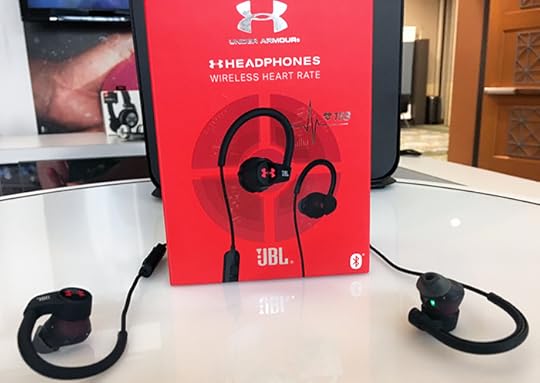
Under Armour JBL Wireless Heart Rate Monitoring Headphones
These tiny, comfortable Bluetooth earphones ($200) incorporate a military-grade heart rate optical sensor, used in fighter pilot helmets. Swipe on an ear bud and hear an audible read out of your heart rate. It pairs with most run apps, and we tried it with both Under Armour’s MapMy Run and Strava. (Available in October.)
View Larger Image
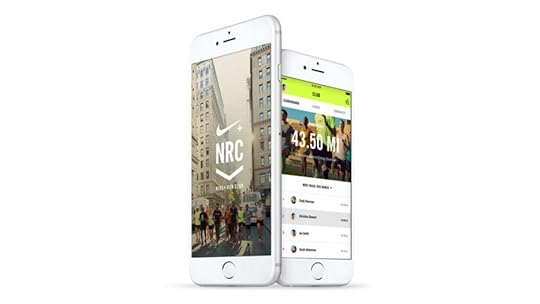
Nike+ Run Club App
Nike released a completely redesigned, updated version and renamed version of its popular Nike+Running app. Run Club, as the name implies, increases ways to sticker and share runs, be inspired and motivated through hashtag-based challenges, leaderboards and by following the run tips, Nike+ music mixes, and community elements in a colorful feed. Run with a Garmin, Wahoo, or Tom Tom device? You can now bring that data into Nike+Run Club. The app now incorporates an adaptive coaching system that starts with your goals and run volume, builds a plan, and then is supposed to respond to your performance and needs as you use it. Tested with Nike’s global coaches and elites, the app will adapt your plan based on your actual run performances along with short, timed, audio coached benchmark runs. (Available now)

More Galleries
The post Sneak Peek: Innovative New Music & Wearable Tech Gear for Running appeared first on Competitor.com.
Ryan Hall's Blog
- Ryan Hall's profile
- 21 followers



